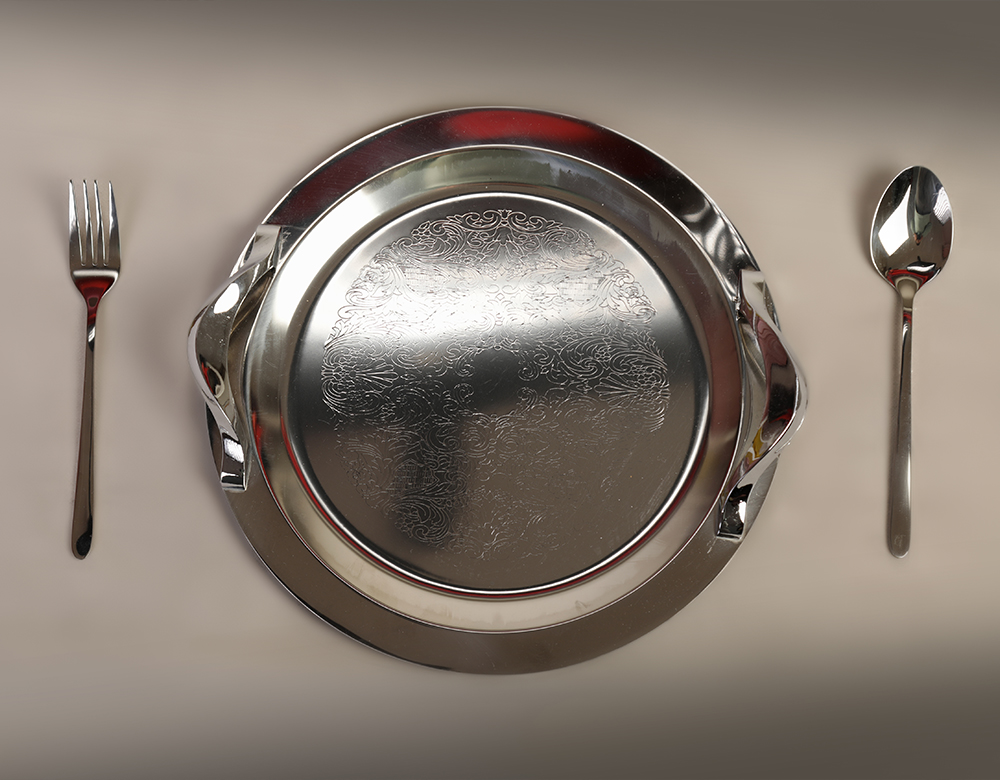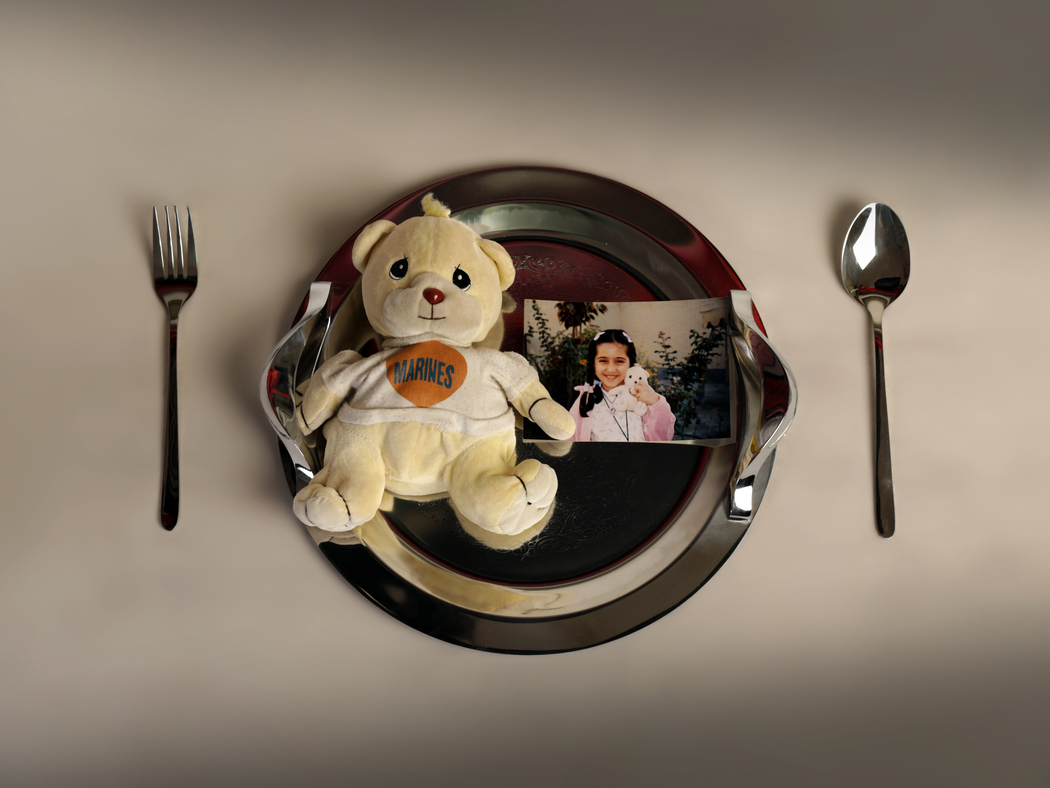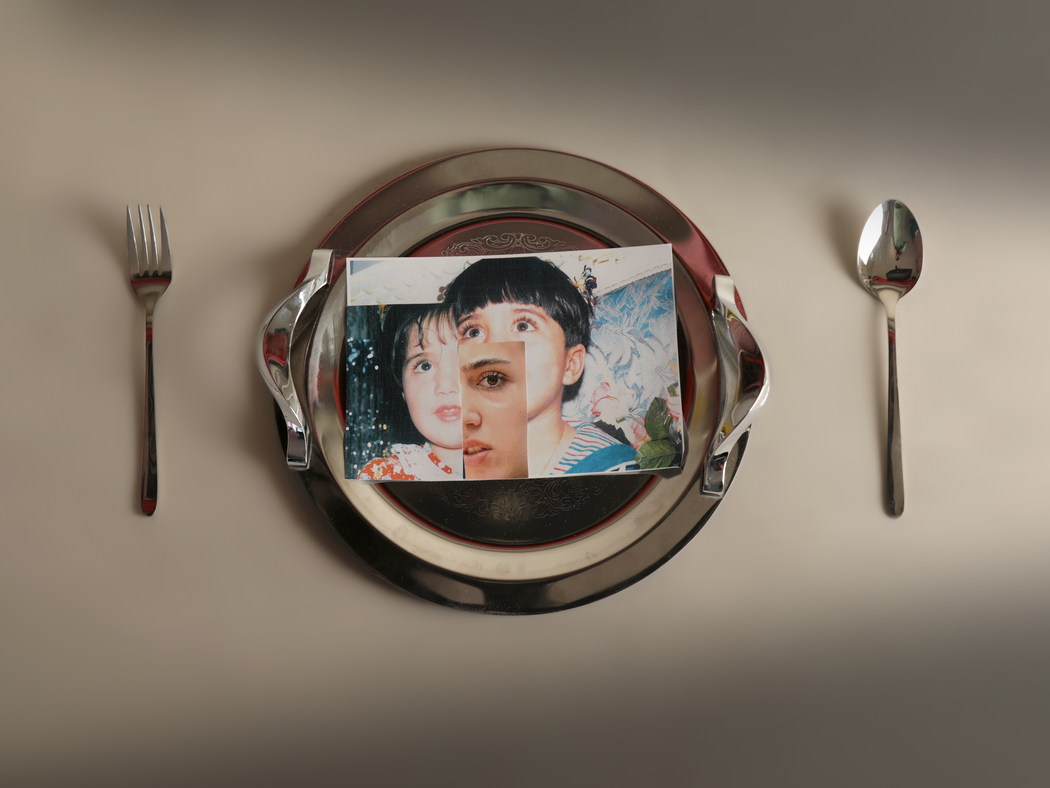Hooria Sanei
Where do you live London: UK
Your education: Master of Interaction Design Communication
Describe your art in three words: Reflective, Bold, Conceptual
Your discipline: I’m a multidisciplinary artist working as a photographer, musician, and interaction designer.
Instagram
 Hooria Sanei | A Menu of Memories
Hooria Sanei | A Menu of Memories
Your work explores the connection between memory, identity, and personal experience. How do you approach translating these abstract concepts into visual form through photography?
Memory and identity are abstract and often hard to define. For me, photography is a way to bring these unseen things to life. I use objects, textures, and symbols that carry personal meaning, like a childhood doll, a lock of hair, or the empty outlines of family members. These items become emotional stand-ins, creating a visual language for what memory feels like: broken, fragile, and constantly changing.
But I don’t always think of my work as “translating” concepts into visuals. That word implies a kind of direct conversion from thought to image, but my process is more intuitive, more sensory. I’ve always found verbal expression challenging at times. There are moments when words fall short, when language feels too linear to hold what I’m trying to say. In those moments, art becomes my voice. I’m not just illustrating an idea; I’m searching for a visual language that can speak where words cannot. A language that’s felt more than read. One that reaches beyond culture, beyond explanation, toward something more universal.
The idea of a “menu of memories” is an intriguing concept. How do you decide which moments or memories to capture in this visual “menu”?
The concept of a tasting menu has always intrigued me. I’ve often thought about how, in a restaurant, the chef chooses exactly what to serve. You don’t pick each dish yourself; instead, the experience is curated, with each course designed to complement the next. That idea inspired the structure of this series. I envisioned myself as both the chef and the dish, deciding which memories to serve and how they would come together as a cohesive experience.
I created nine distinct “dishes,” each drawn from a core memory. The selection was based on the moments that felt most central to my identity and which could sit together in a meaningful, emotional sequence. Just like in a tasting menu, each course stands on its own, but there’s intention behind how they interact. Some memories are tender, others painful, but all are essential to telling a fuller story of who I am.
 Hooria Sanei | Tasting a Feeling
Hooria Sanei | Tasting a Feeling
Your work involves a multi-sensory approach, with elements of both photography and technology. How does the integration of technology shape the way you capture moments and emotions?
My work in photography is deeply rooted in a multi-sensory approach, where technology becomes an extension of how I see and feel the world. While the camera captures the initial moment, it’s through digital tools, whether it’s editing, layering, or interactive display, that I’m able to shape the emotional resonance of an image. Technology allows me to blur the lines between the seen and the felt, between memory and presence. It gives me the freedom to push beyond the literal, to evoke atmosphere, mood, and a kind of emotional texture that invites viewers to not just look at the image, but to experience it.
You mention a transformation of raw ingredients into a dish as a metaphor for how we shape our identities over time. Can you elaborate on how this metaphor manifests in the visual structure of your work?
I see identity as something cooked over time. Raw ingredients, like memories, emotions, and inherited traits, are not enough on their own. They need to interact, to be transformed through experience, pressure, and time. In my visuals, I tried to mirror that by creating images that feel composed but imperfect, curated but emotionally raw. Some photos are literal, like placing a painting on a plate, while others are more abstract, like using absence as a visual element. Just as a dish reveals more than its recipe, I hope these images hint at the deeper emotional processes behind the final form.
 Hooria Sanei | Tasting Time
Hooria Sanei | Tasting Time
The concept of identity as a collage of memories is central to your series. How do you balance the individual elements of your memories, and how do they come together to form a cohesive image?
Informed by the philosophical ideas of thinkers like Martin Heidegger, I view identity as something not fixed but always unfolding. Heidegger described “Being” as a constant state of becoming, where we are shaped by our past while always open to the future. My memories are not merely past moments; they are fragments of an ongoing existence, each one shaping who I am but never fully defining me.
These memories are not isolated; they interact, overlap, and transform over time. There is no need for them to fit together perfectly, because the essence of identity is in the tension between them. We are defined not by a single moment but by the way those moments exist in relation to one another. Some memories are sharp and clear, while others fade into abstraction. Together, however, they form a more authentic, complex representation of self, a “becoming” that is ever-changing.
What interests me in this process is that even though each memory may seem disjointed, they collectively contribute to a larger story. It’s not about creating a perfectly linear narrative, but about how these fragments, when seen as part of an ongoing journey, reveal a deeper unity. Identity is not about aligning experiences neatly, but about how they come together—how they coexist and shape who we are over time.
In this sense, the images I create are not about capturing a fixed identity, but about reflecting a fluid, evolving process. The collage of memories becomes a visual metaphor for “becoming,” showing how identity is shaped by time, experience, and transformation. It is not a thing to be found but a continuous way of being, always changing, always evolving.
The images in this series are deeply personal. How do you approach sharing these intimate aspects of yourself through your work, and how do you hope viewers will relate to it?
Sharing these intimate aspects of myself through my work feels both like vulnerability and release. However, this isn’t just about exposing my own experiences; it’s about opening a space for connection. By sharing these fragments of my life, I hope to offer viewers the opportunity to find pieces of their own stories within them. While the specifics of my experiences are uniquely mine, the themes of memory, identity, and transformation are universal. We are all shaped by time, by the moments that define us, and by the silences in between. Although these images are deeply personal, they serve as an invitation to reflect on the shared human experience.
I want my work to extend beyond the personal and touch something collective. I want viewers to pause and consider how their own identities have evolved, how their memories and experiences have shaped them. For me, art is a space where the personal becomes universal, where my story transforms into a mirror for others. In this shared space, the boundaries of self begin to dissolve, and we are all connected through the emotions and experiences that shape us.
In your creative process, how do you handle moments of uncertainty or emotional vulnerability when creating art based on such personal experiences?
As human beings, we all go through moments of uncertainty, whether it’s in conceptualizing an idea or in the midst of creating something. For me, the key to navigating those moments is embracing the process of making itself. Even when I’m unsure or feeling vulnerable, I return to the act of creation. It’s in those moments that I feel most present and free.
I’ve learned that it’s not always about having a clear vision or a defined path. Sometimes the process is messy, sometimes it’s raw and emotional, and I allow that to be part of the journey. The joy of creating is that it gives me the freedom to explore, to not have all the answers, and to let the work evolve as it unfolds. It’s when I let go of the need for control and embrace the uncertainty that the work feels most honest.
By focusing on the act of creation itself, I move through those uncertain moments with more ease. It’s through this trust in the process that the work becomes a truer reflection of who I am, and often, it’s in the mess and the vulnerability that the most powerful moments emerge

Leave a Reply